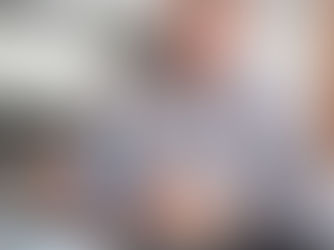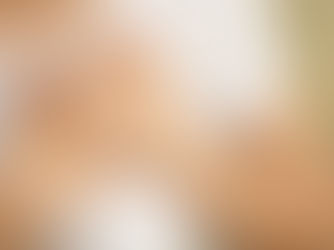
Skolyoz
Skolyoz Nedir?
Normal ve sağlıklı omurgada, omurlara arkadan bakıldığında yukarıdan aşağıya boyun, sırt ve bel bölgelerinde düz bir hat şeklinde görüntü mevcuttur.
Skolyoz, omurganın önden veya arkadan bakıldığında yana 10 derecenin üzerindeki eğilmesidir. Skolyozda omurlar sağa veya sola doğru yer değiştirir ve aynı zamanda kendi eksenleri etrafında döner. Bu nedenle üç boyutlu bir şekil bozukluğu (deformite) olarak tanımlanır.
Skolyoz omurganın en sık sırt ile bel bölgelerinde görülür ve bu bölgelerden birini veya her ikisini içerebilir. En sık eğrilik şekli, göğsün sağ tarafında oluşan eğriliktir.
Skolyozun Sebepleri Nelerdir?
Skolyoz, altta yatan birçok farklı hastalık nedeniyle meydana gelebilir. Doğuştan omurga kemiklerinin oluşumundaki bozukluklar, göğüs kafesi kemiklerinde olan bozukluklar, sinir ve kas hastalıkları, omurga tümörleri, travma, omurga enfeksiyonları, metabolik hastalıklar, omurga kemiklerine yakın bölgelerde geçirilmiş ameliyatlar gibi birçok faktör skolyoza sebep olabilir.
En çok görülen şekli ise nedeni bilinmeyen (idiopatik) skolyozdur.
Yapılan çalışmalar skolyozun genetik bir hastalık olduğunu göstermektedir ve halen skolyoza neden olan genleri ayırt etmek için çalışmalara devam edilmektedir. Halk arasında yaygın olarak bilinen “ağır çanta taşımak” skolyoza sebep olan bir etken değildir.
Skolyozun Yaratabileceği Fiziksel Değişiklikler Nelerdir?
Bir omuz diğerinden daha yüksektir. Bir kürek kemiği (skapula) daha çıkıktır. Bir kalça diğerinden daha yüksektir. Bir bacak daha uzun görünebilir. Belde asimetri vardır, bel çukurları eşit değildir. Gövde ve göğüs kafesi bir tarafa kaymıştır. Baş, kalçaların arasında ortalanmamıştır. Elbiseler düzgün durmaz ve çocuk belden aşağı eğildiğinde bir taraf daha yüksek görünür.
Skolyozda Tedavi Yöntemleri Nelerdir?
Skolyoz, eğriliğin büyüklüğü ve şiddetine göre ameliyat ya da ameliyat dışı yöntemlerle tedavi edilebilir. Cerrahi dışı yöntemler arasında, eğriliğin ilerleyişini fizik tedavi ve egzersizlerle gözlemlemek, korse kullanmak ve alçılama ile takip etmek sayılabilir. Cerrahi kararı büyümenin evresine, eğriliğin yerleşimine ve eğrilik şekline göre değişir. 25-40 derece arasındaki eğrilikler için birkaç farklı senaryo vardır.
Eğer eğrilik kötüleşmiş ancak halen 40 dereceden azsa ve büyüme tamamlanmışsa, bu tür eğriliklerin erişkinlikte ilerleme riski düşüktür. Eğrilik kötüleşmiş ancak ameliyat önerilmiyorsa ve halen büyümeye devam ediyorsa, bu durumda yakın gözlem gerekir ve korse kullanılması düşünülebilir.
Eğer bir eğrilik 40 dereceye ulaşırsa, büyüme tamamlanmamış olsa bile cerrahi girişim önerilebilir. İskelet olgunlaştığında sırt bölgesinde 40-45 dereceden daha az olan eğriliklerde ilerleme eğilimi azdır,ancak bel eğriliklerinin 35-40 derece gibi daha düşük bir eşik değeri vardır.
İskelet olgunlaştığında 50 derecenin üzerinde olan eğriliklerin erişkinlik boyunca ilerleme riski vardır ancak daha yavaş bir hızda (yılda yaklaşık bir ila iki derece) ilerlerler.
Cerrahi önerilme olasılığı yüksektir. Skolyozda cerrahinin amacı deformitenin daha fazla ilerlemesini engellemek ve omurgayı olabilecek en güvenli şekilde düzeltmektir. İlerlemenin durdurulması, yaşamın ilerleyen yıllarında ağır skolyozla birlikte gelen ciddi sağlık sorunlarını da engelleyecektir.
Büyük eğrilikler ile birlikte olabilecek problemlerinden bazıları nefes alma güçlüğü, kalp sorunları, kas zayıflığı ve ağrıdır. Kısaca cerrahi tedaviyle düzgün ve dengeli bir gövde ve omurga elde edilir. Skolyozun tipine, eğriliğin derecesine ve artma potansiyeline, hastanın yaşına bağlı olarak yapılacak cerrahi işlem uzman hekim tarafından belirlenecektir.
Ameliyat sırasında eğrilik, güvenli bir düzeltmenin mümkün olabileceği en yüksek oranda düzeltilir. Bunu yapmak için implantlar (genellikle çubuklar, vidalar, teller ve/veya kancalar) eğriliğin olduğu omurga kısmındaki omurlara tutturulur.
BİLGİ ve RANDEVU İÇİN NUMARANIZI BIRAKABİLİR veya UZMANLARIMIZA SORU SORABİLİRSİNİZ
RANDEVU ve BİLGİ İÇİN NUMARANIZI BIRAKABİLİR UZMANLARIMIZA SORU SORABİLİRSİNİZ



-04.png)
-06.png)
-05.png)
-08.png)
-07.png)























